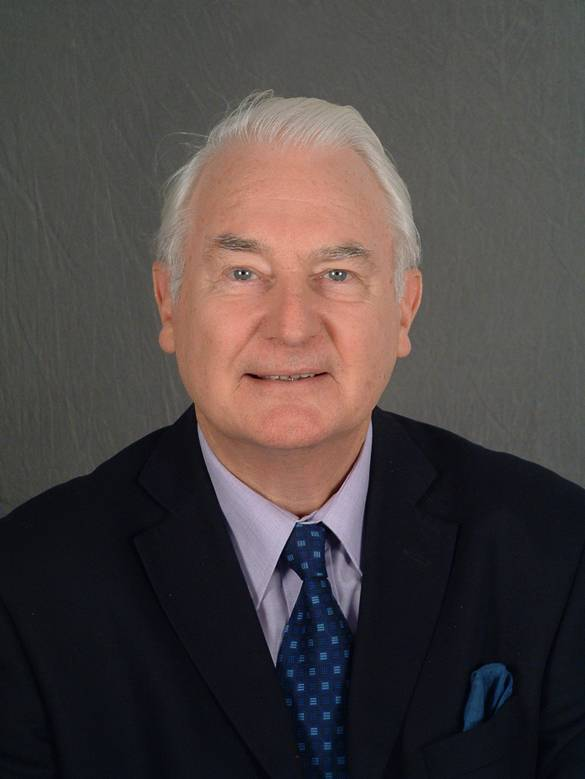The growing linkage between the City University and the City of London....

21st November 2025: Please note that our website is now "frozen", preparing for migration in December.
All our content can be read as normal. Events can continue to be booked as usual.
If you have any queries, please email us at
webadmin@wcomc.org. Thank you
...one of the most important interactions with the City being in the context of management development and financial research....
The following is based on part of a talk which I gave in St Botolphs Hall to the City of London Guides Lecturers Association earlier this year. Some of these observations will also be of interest to members of the WCoMC.
A number of Acts were passed in the 1880s which encouraged ancient endowments and local authorities to aid the developments of technical education. Beneficiaries included Northampton Institute (i.e. City University). The bodies and individuals instrumental in its formation included the L.C.C., the Marquess of Northampton and the livery companies the Skinners and the Saddlers.
The Northampton Institute was founded in 1894; the date when the first stone for its new building was laid. Its main objective was promoting 'the industrial skill, general knowledge, health and wellbeing of young men and women belonging to the poorer classes'. It was clear that the Institute should meet the needs of the local community (Clerkenwell) with its predominant small traders and watch and clock manufacturers. The first Principal was Dr. Robert Mullineux Walmsley (1896-1924). Previously he lectured at the nearby Finsbury Technical College before becoming the first Professor of Electrical Engineering and Applied Physics at Heriot-Watt College in Edinbrugh.
When he commenced in 1896 he had to operate from the Skinners’ Hall in Dowgate Hill because the new building was not finished until the end of 1897. On completion it was officially opened in 1898 by the then Lord Mayor of London, Sir Horatio Davies.
The City Corporation has always had representatives on the governing bodies of the university. One of the important achievements of Oliver Thompson (Chairman of the Board of Governors or Council), and James Tait (Principal and first Vice-Chancellor) was to propose that each Lord Mayor was invited to be the Chancellor of the University after receiving its Royal Charter in 1966. The Council is the body with decision making power. It is Chaired by the Pro-Chancellor, and delegates some of its decision making power to other university committees when appropriate (e.g. Senate).
The Court of the University consists of all the stakeholders, is chaired by the Chancellor, and meets once a year to receive the Vice-Chancellor’s report for the past year. Among the representatives are: “One representative from each of the City Livery Companies, Stakeholders from the communities that the University seeks to serve, including, but not limited to: the City Corporation, Islington Council and Professional Associations”.
The livery companies have always had an influence on the University’s development; in particular the Skinners and Saddlers. As we know some of the newer livery companies have established close links with parts of the university. For example, our former Vice-Chancellor Raoul Franklin was a founder member of the Educators and their first Master. The City Centre for Charity Effectiveness is the result of the efforts of representatives of the WCoMC and Cass Business School. The Centre brings together the resources of Cass and the livery company for the benefit of the third sector. A major activity is providing pro-bono consultancy or mentoring support to many small charities.
In the process of forming another young livery company (Information Technologists), the Clerk to the Corporation encouraged the Master Elect, to discuss the possibility of carrying out a joint project with the Centre for Personnel Research and Enterprise Development at the Business School. A number of sponsors agreed to finance two PhD students and a research assistant to work on the ‘Future IT skill needs in the City’.
One of the early goals of Sir James Tait was to develop a management department at the University. He saw this as a bridge between a predominantly engineering institution and the financially oriented City. This vision was supported by a motion passed by the Court of Common Council in 1965: “In connection with the City University, the corporation would welcome the establishment of a Faculty for Business Management….”. His early actions involved recruiting in 1963 two management-oriented individuals (an economist and an occupational psychologist – myself), and transferring three individuals from the production engineering department to join this group. He then embarked on negotiations with the Mercers’ Company and the Corporation to house this embryonic management department in the heart of the City via Gresham College (in 1966 this was located on the corner of Basinghall Street, next to Guildhall).
Gresham College has a famous, if chequered, history. In his 1575 will, Sir Thomas Gresham left the revenues of his Royal Exchange property in trust to the Lord Mayor and Corporation, and a large sum of money to the Mercers’ Company for the purpose of establishing and supporting a Gresham College. Four of the professors were to be appointed by the Corporation and three by the Mercers’ Company. The City University saw an opportunity of inheriting part of the prestige of Gresham College by taking over the responsibility of organizing the Gresham lectures. The original idea of the College evolving into the business school was not acceptable. The idea of Thomas Gresham, that the College should provide free education to the citizens of London, worked against this. However, for a few years the University did manage to combine its liberal arts lecture programme with the wishes of Gresham. For various reasons this did not satisfy the main stakeholders. The Mercers took back the responsibility for Gresham College and it is now located in Barnard’s Inn (Holborn). During the period when the University and the College were working together, the V-C was a member of the Gresham Council, and a senior member of this body and of the Mercers’ was on the Council of the University.
From the point of view of the University one of the most important interactions with the City was in the context of management development and financial research. From the 1990s one of the statements that appeared in the university’s publicity was ‘the university for business and the professions’.
As early as 1966 when the management department moved into the Gresham College building, the first appointments were made of individuals who had worked in the City (e.g., Sir Robert Shone). One of the early series we organised was the City/Whitehall seminars. Attendance was limited to 8 senior representatives from City institutions (e.g. L&G, Lazard, Barclays) and 8 senior from government departments (e.g. HM Treasury, Employment, Defence). These were held annually at the Bank of England.
Commemorative lectures were another avenue through which members of the University and the City interacted with each other. For example the ‘Mais Lectures’ commemorate the former Lord Mayor and Chancellor of the University; the prestigious series of speakers have included all the Governors of the Bank of England since 1978. Other examples include: the ‘George Daniels Lecture’, and the ‘Edwards Lecture’, both commemorating the achievements of former Masters of Livery Companies.
The linkages mentioned above have no doubt contributed to the growth of the University in both size and reputation. This growth is reflected in the published criteria used in comparative ratings, particularly those associated with Cass. A major stepping stone will be achieved next year when the University becomes an integral part of London University.

Liveryman, Professor Allan Williams
Emeritus Professor of Organisational Psychology
